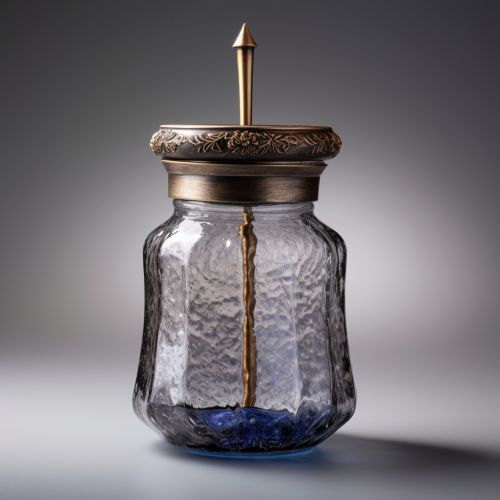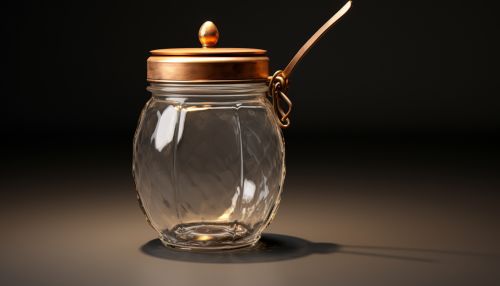Leyden jar
Introduction
The Leyden jar is a device that "stores" static electricity between two electrodes on the inside and outside of a glass jar. It was the original form of a capacitor (originally known as a "condenser"), a device for storing electric charge.
History
The Leyden jar was invented independently by German cleric Ewald Georg von Kleist on 11th October 1745 and by Dutch scientist Pieter van Musschenbroek of Leiden (Leyden) in 1745–1746. The invention was named after the latter, as Musschenbroek communicated his discovery to the scientific community.


Design and Operation
A typical design consists of a glass jar with metal foil cemented to the inside and the outside surfaces, and a metal terminal projecting vertically through the jar lid to make contact with the inner foil. It was long believed that the charge was stored in the glass, but modern consensus is that the charge is stored in the residual conductive medium (water vapor, for example) inside the jar.
The jar is charged by an electrostatic generator, or other source of electric charge, connected to the inner electrode while the outer foil is grounded. The inner and outer surfaces of the jar store equal but opposite charges.
Applications
The Leyden jar was used in a variety of applications for research in electricity, for medical therapy, and for entertainment. It was used to conduct many early experiments in electricity, and its discovery was of fundamental importance in the study of electricity. Prior to the invention of the battery, Leyden jars were used to power early radios.
Modern Use
While Leyden jars are mainly of historical interest, because they are unsafe and inefficient compared to modern capacitors, they are still used in a variety of science education demonstrations.
